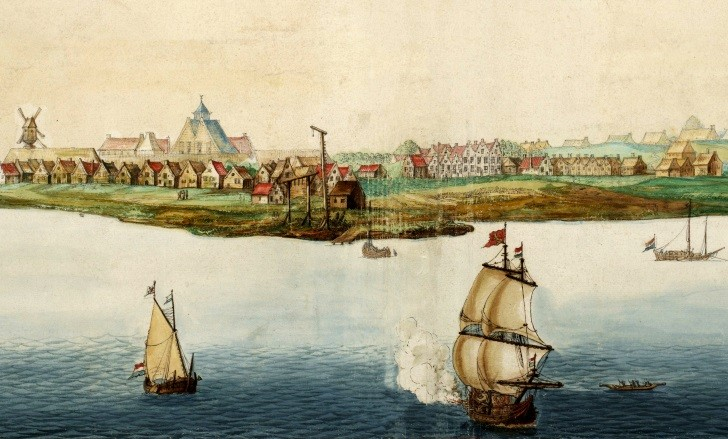My Why
- fawnbrokaw
- Mar 21, 2024
- 3 min read
Updated: Aug 21, 2024
Based on the real life of an inaugural American woman determined to not only survive, but thrive, in the days when Manhattan was wilderness.
It's a coming-of-age story for a frontier woman, but also for the city that would become New York.
I've always loved history. The older, the better.
I became interested in my genealogy in 2017 when I was getting married and trying to decide if I’d keep my last name. I wanted to see if I'm related to Tom Brokaw. I found out yes! He's my 7th cousin! I was amazed that I could trace the first American Brokaw to a Walloon (more on that term here) named Bourgon Broucard who landed in NYC in 1675. In that family ancestry, I found out I was also a descendant of Joris Rapalje and Catalyna Trico, who were among the very first settlers of New Netherland in 1624.
That was the first I heard of New Netherland (which included the territory of what became New York, New Jersey, Delaware, Connecticut, with smaller outposts in Pennsylvania and Rhode Island). Despite knowing the There Might Be Giants song "Istanbul," I clearly hadn't paid enough attention to the historical note "Even old New York was once New Amsterdam."
Their daughter, Sarah Rapalje, my eighth great-grandmother, was born in 1625 in present-day Albany, NY. They moved to Manhattan in 1626. The Rapaljes are often cited in histories of New Netherland because Sarah is regarded as the firstborn daughter of the colony (Jan Vigne claimed to be the firstborn male, though his exact birthdate/location is harder to verify).
Catalyna is often noted because of several testimonies she gave in her golden years regarding the events of the earliest settlement. Early records were lost so Catalyna’s account is very important. She and Joris are regarded as the Adam and Eve of New Netherland, as their descendants now number around 1 million Americans. (Shoutout to my other Rapalje relatives, if you’re reading this!)
I kept returning to Sarah and wondering about her life. Learning more about the Dutch colony, there was a remarkable contrast to the English colonies (from which I also descended from Mayflower immigrant Francis Cooke). In the Dutch colony, women appear in court records on their own behalf, they attended school, owned land, kept their maiden names, and conducted business. Where the English colonies were homogenous, New Netherland was multicultural. The New Netherlanders even pushed for representative democracy while New England clamped down on an intolerant, theocratic governance.
On one of my favorite podcasts, Vulgar History (a feminist/women's history/comedy podcast), writer Anne Foster interviews many historical fiction authors. One day she asked in her IG stories “What’s your Roman Empire?” or the historical time you can’t stop thinking about. I answered “the Dutch origins of New York City” and right then decided “I could write a book about that.” So I began writing.
As a mother of a toddler, with a full-time day job, writing this book became an outlet for me. It was something I could do in the wee hours of the night when everyone was asleep.
My book is broken into sections with quotations from Rainer Maria Rilke’s Sonnets to Orpheus. He wrote that in three weeks which he described as “a savage creative storm.”
Writing this novel was much like that.
On this blog, I'll share how the novel took shape, including my research trips, maps, Dutch colonial fashion, food, handicrafts, tools for character development, editing, the business of indie authorship, and interesting history I just couldn't fit in the novel.
Welcome and enjoy the ride :)

Comments